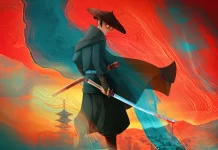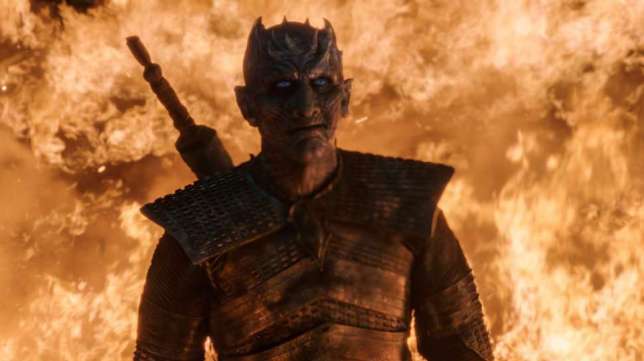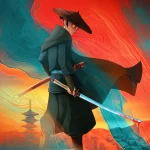Warning: Contains spoilers for Game Of Thrones.
Game Of Thrones concluded the battle of Winterfell with one of the most surprising deaths in the show’s history, but there’s some hanging questions which leave a hollow aftertaste.
In The Long Night, Arya Stark (Maisie Williams) became the unexpected hero to vanquish The Night King, wiping out the White Walker threat in one mighty swoop.
With the White Walkers eliminated, the show has precision focus on the battle for the Iron Throne against Cersei Lannister (Lena Headey), largely removing a key fantastical element entirely.
But what about all the elaborate theories about The Prince That Was Promised and The Night King’s true purpose? You might have questions, but it seems the show just isn’t that concerned with your blog posts.
Despite this, there’s a number of chin-scratchers which haven’t been answered in The Night King’s swift removal – so here’s everything we may never, ever, know the answers to.
What was all those tense eye exchanges with Jon Snow about?

The reason many were surprised Arya killed The Night King was due to his history with Jon Snow, having exchanged numerous glances between each other in episodes Hardhome and Beyond The Wall – appearing to build towards a showdown where they’d come to blows.
Interestingly, this moment presented itself but was taken away in The Long Night. As Jon Snow rushed towards The Night King isolated on the battlefield, he raised the dead stopping Jon in his tracks which allowed him to escape.
While we know The Night King was aiming to wipe out civilisation, starting with Bran Stark first, the eye-gazing with Jon Snow now comes off like a red herring, even if it enabled him to warn others of the undead threat.
Did the spiral shapes have greater significance?
The second episode of season eight saw The Night King deliver a message via young Ned Umber (Harry Grasby), by impaling him on the wall surrounded by amputated limbs.
It was the spiral design, however, which sparked speculation over whether there’s more there than meets the eye, including a potential connection to House Targaryen, emphasised by his command of Daenerys’ dragon Viserion.
While we already knew the spirals were created by the Children Of The Forest in their ritual to create the White Walkers, their prominence throughout the show has always felt slightly more than a casual easter egg.
Azor Ahai and The Prince That Was Promised – do they even matter?
Melisandre has repeatedly spoken about The Prince That Was Promised (otherwise known as Azor Ahai), a prophesised hero who would return to defeat the White Walkers with a flaming sword.
In the books, Melisandre explains: ‘There will come a day after a long summer when the stars bleed and the cold breath of darkness falls heavy on the world. In this dread hour a warrior shall draw from the fire a burning sword. And that sword shall be Lightbringer, the Red Sword Of Heroes, and he who clasps it shall be Azor Ahai come again, and the darkness shall flee before him.
‘When the red star bleeds and the darkness gathers, Azor Ahai shall be born again amidst smoke and salt.’
It was long believed this referred to either Jon Snow or Daenerys Targaryen, but Arya Stark might have thrown this theory awry after she eliminated the darkness, aka The Night King.
While it’s important to note this theory could be interpreted in a number of ways, with only four episodes left and no Lightbringer sword seemingly in sight, The Night King’s death casts major doubt over whether this will play any significant part in the final wrap up.
What’s all the business with them babies?
Back in season four, the fourth episode concluded with The Night King converting the infant sons of Craster’s Keep into White Walkers.
While it could be taken on the surface level of The Night King acquiring more numbers for his army, it seems peculiar why he’d be targeting babies specifically – especially if they don’t age once they have been turned to the blue-eyed side, which has also gone unexplained.
It’s a slightly bizarre moment in hindsight, although it could be addressed in the episodes to come. Will the last shot of Westeros be a White Walker baby uprising? Our nightmares aren’t ready.
Did we all just overthink death itself?
The Night King and the White Walkers are, generally, a personification of death itself. An inevitable lumbering movement which has no other motivation other than total extinction.
While some clamouring for answers to their origins (which we do already know) might be natural in a show like Game Of Thrones where every detail feels carefully planned – maybe our theorising habits simply don’t make sense when faced with death itself.
Compared to Cersei, The Night King has always been a one note villain, and maybe the ambiguity around the White Walkers keeps them slightly more interesting than any explanation could.
Game Of Thrones continues Sunday on HBO and Sky Atlantic. Seasons one to seven are available on NOW TV.
MORE: Why are people calling Game of Thrones’ Arya Stark a Mary Sue?
MORE: Jon Snow owes everything to the powerful women of Game Of Thrones and here’s the proof



















![[Book Review] The Blade Itself (The First Law Trilogy) by Joe Abercrombie](https://bendthekneegot.com/wp-content/uploads/2018/01/1516047103_maxresdefault-218x150.jpg)






















